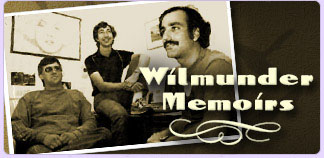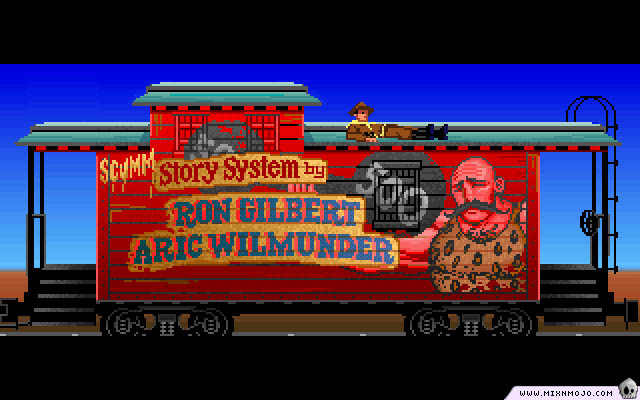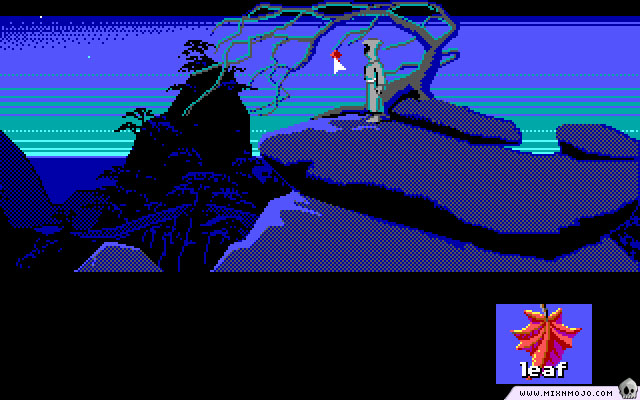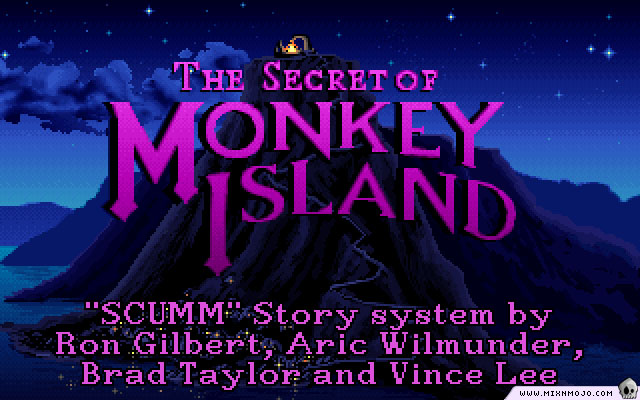Articles

Wilmunder Memoirs Page Four
Ron then set out on another design, this one tentatively titled, Space Party Aliens. For the life of me, I can't recall what the story was, but Ron had worked on the designs for the alien characters and was preparing to enter production. At this point, events forced SPA to hit the circular bin.

In 1988, we were approached by George and asked to develop a title based on the upcoming Indiana Jones and the Last Crusade. An initial design was put forward where the player would play a game, and at a certain point, they were told to open the accompanying book to a particular page, and follow the story along from there. After months of design work, this approach was rejected and a new course was chosen. Both Ron Gilbert and David Fox were pulled from their projects and placed on the now critical-path Indy. There was also a hard deadline of about 7 months to ship, since it had to release in time with the movie.

By this point, the C64 had been abandoned, and the IBM PC became our primary target platform. Until this point, the SCUMM compiler only ran on a SUN workstation and we used a homegrown system to transfer the data files onto other machines. During Indy, the entire development system was converted to run on a PC. For the first time, you could pack up a PC and all of the software and develop SCUMM games wherever you wanted to. In order to do this, we had to convert the Cel Animation tool from the SUN workstation to a new tool that ran on the PC. After a few months, the new tool BYLE was created to do this job. We needed a tool to work on the fonts, and with not too much effort, we created SPIT. Editing the rooms in the game, selecting valid 'walk' areas and selecting doors that could open and close, and other items in the game soon was the work of FLEM. We had long given up trying to create acronyms, but we tried to stay with the 'body fluid' theme.
At one point we needed a sound tool and we were running out of gross fluids. Chip's wife had a baby and we remembered him telling us about the evil black tar-like substance that babies had in their digestive tract when they are born. For the first few days this stuff moves through their bowels until they start digesting milk. Sort of a packing-material for newborns. We went to Chip and asked him what it was called, and he wasn't sure, but he said that it was smegma. We named the sound tool SMEGMA. About 3 months later, we hired a programmer who nearly choked when we mentioned the name. Turned out that the black material in babies was actually called Muconium and that smegma is a rather foul-smelling cheese-like substance that collects around men's genitalia. After some debate, a few weeks later, we decided to rename the utility.

In 1989, we hired Brian Moriarty, the creator of a number of text-based adventures for Infocom. This time, SCUMM was really put to the test as Brian began working on the game LOOM, and Ron began work on The Secret of Monkey Island. These games had vastly different styles, and yet they were being built simultaneously using the same tools and nearly identical game engines.

Ron and Brian's development styles were also quite different. Brian was used to being the master of an entire engine, with no need of support from others. He was the programmer, and writer, with no need for artists, since no art was used. Ron had always worked best collaboratively, and it was at this point that the first 'Scummlets' were hired. This group of 4 scripters was hired not just for their technical prowess, but also more importantly for their ability to combine dialog writing, puzzle creation, animation management, and a host of other talents together into one person. The first Scummlets were Dave Grossman, Tim Schaefer, Jenny Sward, and Ron Baldwin. I remember Tim's resume the most, since it was written like a cartoon accompanied with really bad drawings of what Tim's life would be like if he was hired to work for LucasFilm. Fortunately, the writing was far better than his art, and his humor is still unsurpassed today.
Before being thrown onto a project, Ron ran SCUMM U. where for a full month, the new scripters were given daily instruction in the use of the SCUMM language. At the end of the training, they were each given access to all of the existing game assets and had to build a mini-game using the system. They were then required to test each other's games, and fix the bugs that others found in theirs. This was when we really got a chance to watch as each game developed as an extension of the scripter's personality.
This ends this series of installments for Wilmunder Memoirs. Many thanks to Aric for all of the great information. If you would like to see more of these, be sure to post a comment and perhaps we can persuade him to write more!